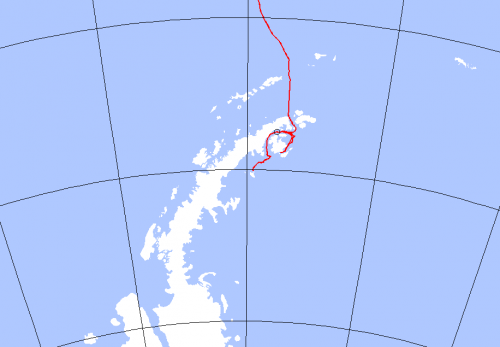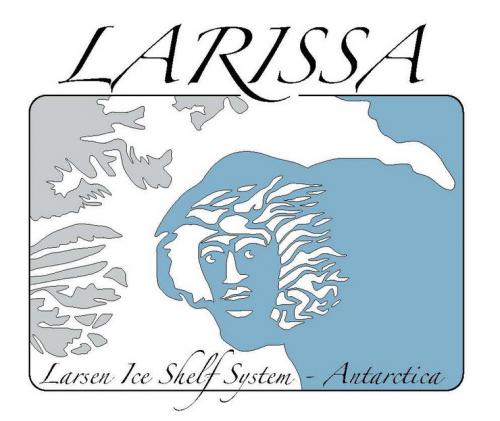Speed 4.2 knots (kts)
Course 175°
Location Larsen A (-65.077835, -59.449185)
Depth 296 m
It seems like I should stop saying what I think we're going to do next, because by the time I wake up something has caused our plans to change. Sea iceThere are terms for different types of ice. Shorefast ice forms along coasts and is attached to land. Pack ice is ice floating in open water. Multiyear ice is ice that has survived at least 1 summer. First year ice is ice that has not yet survived a melting season. has managed to clog our path and we have yet again rerouted our trip. We are now headed towards Robertson Island where the GeologyThe science that deals with the dynamics and physical history of the earth, the rocks of which it is composed, and the physical, chemical, and biological changes that the earth has undergone or is undergoing. team hopes to collect rock samples and the Biology team hopes to collect algae samples. You can see from the map below we are almost at a little white dot (Robertson Island) and as long as the ice is good, the team will leave at daybreak.

LARISSA
This cruise is part of an ongoing scientific collaboration called LARISSA, which stands for the LARsen Ice Shelf System in Antarctica. There are different parts of the Larsen Ice Shelf and (going from north to south) they are called Larsen A, Larsen B, Larsen C. The Larsen A and Larsen B ice shelves have mostly collapsed and the only ice shelf remaining is the Larsen C. Right now, if you look at the map above, we are in the area known as Larsen A.

What's so incredible about this cruise is the unique way in which a group of scientists are working together to learn more about a particular environment. I've mentioned biologists who are looking at algae, as well as geologists who are collecting rocks on an island. How are these things connected? All these scientists are trying to gain a better understanding of how this specific marine ecosystem functions and how it functioned long ago. The rocks will tell stories of the past, while the algae will tell stories of the present. By learning about the past and present, the scientists on board are hoping to make predictions of how climate change may affect this area in the future.
It's surprising how much their work overlaps. The geologists and biologists work together to take samples from the marine sediment cores. The biologists and oceanographers work together to identify how the ocean environment affects the organisms found there. The oceanographers and geologists work together to figure out how current patterns are related to sediment accumulation. Everyone's research overlaps and it's beautiful to watch how all these scientists work together to accomplish interdisciplinary science.
A couple of interesting links for those of you who want to know more:


Comments